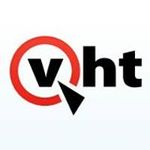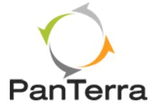Description

Dialfire

VHT Callback
Comprehensive Overview: Dialfire vs VHT Callback
Here's a comprehensive overview of Dialfire, VHT Callback, and XenCALL, including their primary functions, target markets, market-related insights, and differentiating factors:
Dialfire
a) Primary Functions and Target Markets
- Primary Functions: Dialfire is a cloud-based call center software, primarily offering predictive dialing, automated calling campaigns, real-time reports, and CRM integration. It's designed to streamline outbound call processes, optimize agent time, and improve target reach.
- Target Markets: Dialfire caters to small and mid-sized businesses (SMBs), marketing agencies, and sales teams across various industries that require efficient outbound telemarketing solutions.
b) Market Share and User Base
- Dialfire is not typically seen as a market leader in the broader call center software industry, which is dominated by larger platforms like Five9 or Genesys. However, it serves a niche market and has a loyal user base, particularly within Europe due to its adherence to stringent data protection regulations such as GDPR.
c) Key Differentiating Factors
- User-Friendly Interface: Dialfire is praised for its ease of use and quick setup, allowing businesses to start campaigns without the need for extensive training.
- Flexibility and Customization: Offers customizable workflows and scripting to tailor campaigns to specific needs.
- Cost-Effectiveness: Competitive pricing structures especially beneficial for small businesses and startups.
VHT Callback
a) Primary Functions and Target Markets
- Primary Functions: VHT Callback, part of the VHT (Virtual Hold Technology) suite, focuses on enhancing customer experience by providing callback solutions. It reduces wait times by allowing customers to request a call back rather than waiting on hold.
- Target Markets: Mainly targets large enterprises and customer support centers looking to improve customer satisfaction and streamline inbound call management. Industries include telecommunications, healthcare, and financial services.
b) Market Share and User Base
- VHT Callback is widely used by enterprises that emphasize customer experience, holding a significant position within the niche of callback solutions due to its innovative approach in handling customer interactions.
c) Key Differentiating Factors
- Customer Experience Focus: Specifically designed to reduce wait times and improve customer satisfaction.
- Seamless Integration: Easily integrates with existing contact center platforms, promoting efficiency without requiring a complete system overhaul.
- Scalability and Reliability: Known for handling high volumes of traffic and offering robust support to large organizations.
XenCALL
a) Primary Functions and Target Markets
- Primary Functions: XenCALL provides an all-in-one cloud-based predictive dialer solution. Features include CRM integrations, multichannel communication, reporting analytics, and lead management tools.
- Target Markets: Primarily targets telemarketing firms, sales teams, and B2B companies needing robust outbound call solutions to manage outreach campaigns effectively.
b) Market Share and User Base
- XenCALL operates in a competitive market but is noted for its strong presence among sales-focused teams due to its comprehensive feature set. Its market share is moderate, focusing on North American clients.
c) Key Differentiating Factors
- All-in-One Platform: Combines dialing, CRM, and analytics into a single solution, reducing the need for multiple software tools.
- Performance and Analytics: Offers detailed performance analysis, helping companies monitor KPIs and optimize campaigns effectively.
- Customer Support and Training: Noted for excellent customer support and providing training resources to help teams utilize the software efficiently.
Comparative Analysis
-
Market Positioning:
- Dialfire and XenCALL are more prevalent among small to mid-sized businesses seeking cost-effective dialing solutions.
- VHT Callback targets larger enterprises with a focus on enhancing customer satisfaction through improved call handling.
-
Product Differentiation:
- Dialfire and XenCALL emphasize optimizing outbound dialing campaigns with integrated CRM features, suitable for sales-focused environments.
- VHT Callback differentiates by enhancing inbound call experiences, minimizing customer wait times with effective call-back management.
-
Regional Focus:
- Dialfire sees more adoption in Europe, possibly driven by its compliance with local data regulations.
- XenCALL primarily serves North American markets.
- VHT Callback is a global enterprise solution, widely adopted across various high-volume industries.
Each of these platforms offers distinct value propositions tailored to specific business needs, whether enhancing outbound call efficiency or streamlining customer interactions.
Contact Info

Year founded :
Not Available
Not Available
Not Available
Not Available
Not Available

Year founded :
Not Available
Not Available
Not Available
Not Available
Not Available
Feature Similarity Breakdown: Dialfire, VHT Callback
When comparing Dialfire, VHT Callback, and XenCALL, all of which are involved in the realm of call center and telecommunication software, it’s important to understand both their shared functionalities and unique attributes. Here's a breakdown:
a) Core Features in Common
-
Call Management:
- All three systems offer robust call management capabilities, allowing for inbound and outbound calling, call queuing, and call routing.
-
Analytics and Reporting:
- Each platform provides analytics and reporting tools, enabling businesses to track call statistics, agent performance, and other key metrics.
-
CRM Integrations:
- These products support integration with customer relationship management (CRM) systems, aiding in maintaining and utilizing customer data effectively.
-
Scalability:
- They offer features that allow for scalability, supporting both small and large operations by handling varying levels of call traffic and user demands.
-
Security and Compliance:
- Ensuring security through data encryption and compliance with telecommunication regulations is a standard feature across all three platforms.
b) User Interface Comparison
-
Dialfire:
- Known for its customizable interface tailored to allow users to set up workflows that align with specific business needs. It tends to have a learning curve but offers flexibility once users are accustomed.
-
VHT Callback:
- Typically features a more straightforward UI aimed at ease of use, focusing on minimizing caller wait times and improving customer satisfaction through scheduled callbacks.
-
XenCALL:
- Offers a modern and intuitive interface with drag-and-drop customization features. It is often praised for its user-friendly design which facilitates quick adoption by new users.
c) Unique Features
-
Dialfire:
- Unique for its focus on outbound calling efficiency, with advanced predictive dialing features and integration capabilities tailored for automated, high-volume campaigns.
-
VHT Callback:
- Specializes in callback technology. It is unique in its focus on optimizing call schedules, reducing wait times, and improving customer satisfaction by offering virtual queueing systems.
-
XenCALL:
- Features seamless VoIP integration and an AI-driven sales optimization suite. Its intelligent lead scoring and routing are standout features that cater predominantly to sales-centric operations.
In summary, while all three platforms share common functionalities related to call management and CRM integrations, they each present distinctive features and focus areas which may suit different business requirements. Dialfire caters particularly to high-volume outbound campaigns, VHT Callback excels in enhancing the customer waiting experience, and XenCALL is adept in providing a comprehensive suite for sales-driven environments with its AI capabilities.
Features

Not Available

Not Available
Best Fit Use Cases: Dialfire, VHT Callback
When evaluating Dialfire, VHT Callback, and XenCALL, it's essential to consider their core features, strengths, and best-fit scenarios for deployment within different businesses or projects. Here's a breakdown of each tool:
a) Dialfire
Best Fit Use Cases:
- Outbound Sales Campaigns: Dialfire is well-suited for businesses focusing on outbound sales due to its advanced dialing features and robust outbound call management capabilities.
- Telemarketing: Companies running extensive telemarketing operations can leverage Dialfire's multi-user support and scalability, accommodating high volumes of calls.
- Surveys and Feedback Collection: Ideal for projects that require outbound calling to collect surveys or feedback efficiently.
Industry Verticals and Company Sizes:
- Small to Medium Enterprises (SMEs): Those needing affordable and scalable outbound calling solutions.
- Call Centers: Particularly those specializing in sales, surveys, or telemarketing across various sectors like retail, finance, and market research.
b) VHT Callback
Preferred Scenarios:
- Customer Service Optimization: VHT Callback is highly effective for industries that experience high volumes of inbound calls and wish to reduce customer wait times.
- Peak Time Management: Businesses can use VHT Callback to manage call spikes by offering customers the option to receive a callback instead of waiting.
- Enhancing Customer Experience: Suitable for companies looking to improve overall customer satisfaction by minimizing hold times.
Industry Verticals and Company Sizes:
- Large Enterprises and Contact Centers: Particularly those in industries like telecommunications, utilities, and e-commerce, where customer service is critical.
- Service Providers: Businesses aiming to enhance service levels and customer loyalty without massively scaling their contact center operations.
c) XenCALL
Consider Use Cases:
- Comprehensive CRM with Dialing Integration: When businesses require a combined solution for customer relationship management and calling, XenCALL is highly applicable.
- Inbound and Outbound Calling Needs: Ideal for businesses that need robust solutions for both inbound and outbound communications.
- Real-Time Analytics and Reporting: Companies needing detailed analytics and insights on call performance for sales optimization.
Industry Verticals and Company Sizes:
- Medium to Large Enterprises: Especially in sectors like insurance, real estate, and financial services, where detailed customer interaction histories are crucial.
- Integrated Sales and Marketing Teams: Businesses that benefit from integrating their sales processes with marketing efforts within one platform.
d) Catering to Different Industry Verticals or Company Sizes:
- Dialfire primarily targets businesses that are sales-driven and require a scalable solution for high-volume outbound communications.
- VHT Callback is focused on enhancing customer experiences in environments where reducing customer hold times and improving service efficiency are priorities.
- XenCALL provides an all-in-one solution that is attractive to businesses needing integrated CRM capabilities alongside their communication tools, with an emphasis on sales and marketing synergies.
Each tool serves distinct needs, and the choice depends significantly on the primary objectives of the business, whether it’s enhancing sales, improving customer service, or integrating communication with CRM functionalities. Companies should evaluate their specific requirements, industry context, and size to select the most appropriate solution among these options.
Pricing

Pricing Not Available

Pricing Not Available
Metrics History
Metrics History
Comparing undefined across companies
Conclusion & Final Verdict: Dialfire vs VHT Callback
When comparing Dialfire, VHT Callback, and XenCALL, it's essential to evaluate each based on features, usability, cost, support, and scalability. Here's a comprehensive conclusion with verdicts:
Conclusion and Verdict:
a) Best Overall Value:
Dialfire offers the best overall value for businesses seeking an integrated and flexible dialing solution with strong customization capabilities and competitive pricing. Its balance between feature set and cost makes it attractive for small to medium-sized enterprises looking for cost-effective and scalable communication solutions.
b) Pros and Cons:
Dialfire:
-
Pros:
- Highly customizable and flexible architecture.
- Competitive pricing, suitable for various business sizes.
- Strong CRM integration capabilities.
- User-friendly interface with an intuitive design.
-
Cons:
- May require a steeper learning curve for non-technical users.
- Limited advanced analytics compared to competitors.
VHT Callback:
-
Pros:
- Excellent for enhancing customer experience with callback features.
- Reduces wait times and improves customer satisfaction.
- Easy to integrate with existing systems.
-
Cons:
- Primarily focused on callback functionality, lacking broader call center features.
- Potentially higher cost for businesses that need comprehensive call management solutions.
XenCALL:
-
Pros:
- Robust features specifically designed for sales and outbound calls.
- Strong reporting and analytics tools.
- Comprehensive CRM functionalities.
-
Cons:
- Higher cost compared to Dialfire, especially for small businesses.
- Can be complex to configure initially, requiring proper onboarding.
c) Recommendations:
For businesses primarily interested in a comprehensive and flexible dialing system, Dialfire is recommended for its customization, cost-effectiveness, and ease of integration. It is especially suitable for small and medium-sized enterprises seeking an adaptable solution.
If the primary focus is on improving customer satisfaction through callback functionalities, then VHT Callback is the go-to choice, particularly for established call centers that can afford to invest in specialized customer experience tools.
XenCALL is ideal for organizations with a strong focus on sales and outbound calling campaigns that can benefit from its specialized CRM and reporting features.
Overall, users should consider their specific operational needs, scalability requirements, and budget constraints. Evaluating the long-term benefits and how these align with company goals will play a critical role in the decision-making process. Trial periods or demos can provide valuable insights into each software's usability relative to user requirements.
Add to compare
Add similar companies



